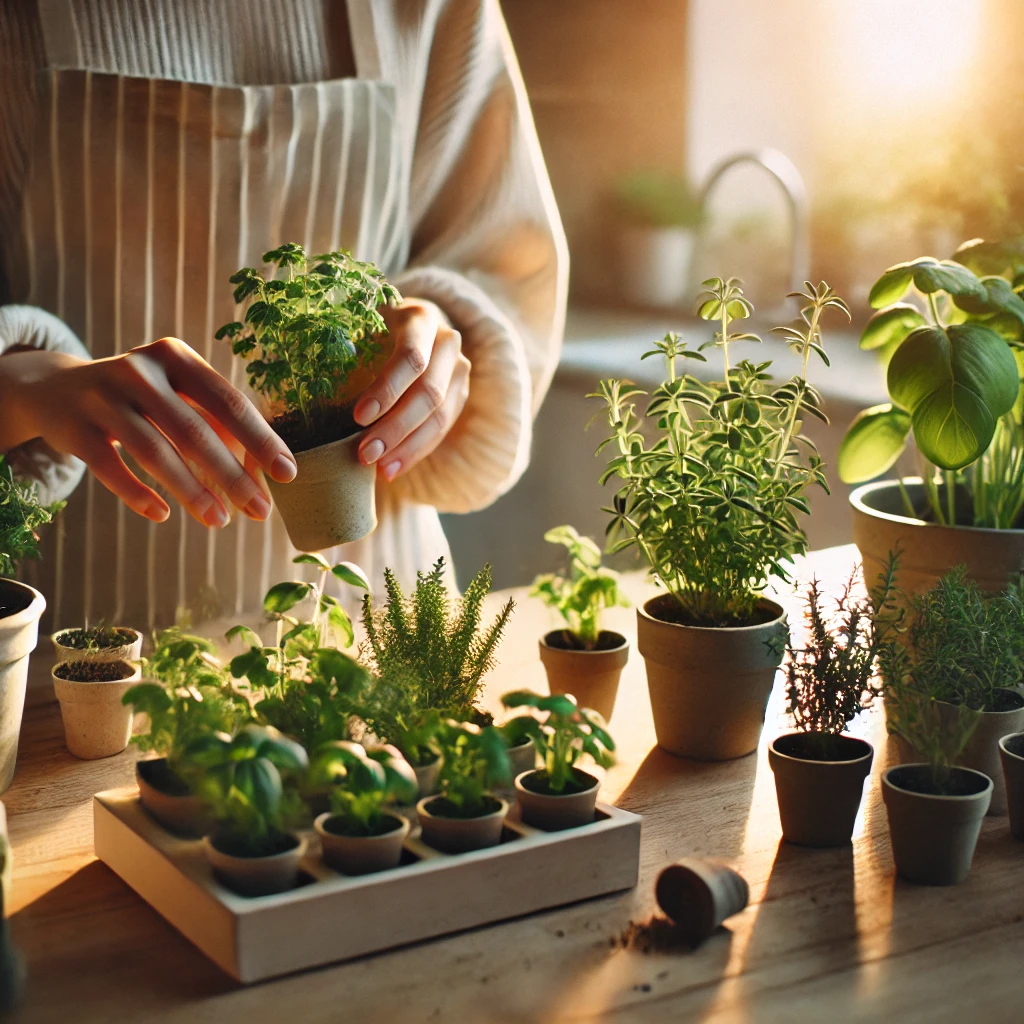1. Choose the Right Herbs for Beginners
The first step in building an indoor herb garden is selecting the right herbs. Some herbs are easier to grow than others, especially for beginners. Choose herbs that are low-maintenance and versatile for cooking.
- Basil: One of the most popular herbs for home gardens, basil grows quickly and can be used in everything from pasta sauces to salads.
- Mint: Known for its refreshing flavor, mint is resilient and perfect for beginners. However, it can spread quickly, so be sure to plant it in its own container.
- Chives: These small, onion-like herbs are easy to grow and don’t take up much space. They’re great for adding a mild onion flavor to your dishes.
- Parsley: Parsley is a versatile herb that grows well indoors and is a great addition to many recipes.
2. Find Affordable Containers
You don’t need to spend a lot on fancy pots to grow your herbs. Many household items can be repurposed into containers, or you can find affordable options at local stores or online.
- Use recycled containers: Items like mason jars, tin cans, or even old mugs can make perfect herb containers. Just make sure they have proper drainage holes to prevent waterlogging.
- Shop at thrift stores: Secondhand shops often carry inexpensive pots and containers that can be used for herb gardening.
- Dollar store options: Dollar stores frequently sell small pots and containers that are perfect for growing herbs on a budget.
3. Choose the Right Soil and Fertilizer
Herbs need nutrient-rich, well-draining soil to grow strong and healthy. You don’t need to invest in expensive potting mixes—an affordable, basic potting soil will work well for most herbs.
- Basic potting mix: Choose a general-purpose potting soil that’s labeled for indoor plants. It should have a good balance of nutrients and allow water to drain properly.
- Fertilizer options: While herbs don’t need a lot of fertilizer, feeding them once a month can help boost growth. Look for a balanced, organic fertilizer that’s affordable and easy to find at garden centers.
4. Maximize Natural Light
Herbs thrive in sunlight, so finding the right spot for your indoor herb garden is key. Most herbs need at least 6 hours of direct sunlight per day to grow well.
- Place your herbs near a sunny window: South-facing windows are ideal, as they get the most consistent sunlight throughout the day.
- Use grow lights: If you don’t have access to enough natural light, consider investing in an affordable grow light. These lights mimic sunlight and can be a game-changer for indoor gardening.
- Rotate your plants: To ensure even growth, rotate your herb containers every few days so that all sides of the plant get sunlight.
5. Water and Care for Your Herbs Properly
Watering is one of the most critical aspects of growing healthy herbs, but it’s easy to overdo it. Indoor herbs typically need less water than outdoor plants, so it’s important to monitor the moisture level of the soil.
- Check soil moisture: Stick your finger about an inch into the soil. If it feels dry, it’s time to water. If it’s still moist, wait a day or two before checking again.
- Water at the base of the plant: Always water the base of the plant, avoiding the leaves, to prevent mold or mildew from developing.
- Prune regularly: Regularly trim your herbs to encourage new growth. Pruning also helps the plant stay bushy and prevents it from becoming too leggy.
6. Expand Your Herb Garden on a Budget
Once you’ve mastered the basics, you may want to expand your herb garden by adding more varieties or growing new herbs from cuttings.
- Propagate from cuttings: Many herbs, like mint and basil, can be easily propagated by taking cuttings and placing them in water until they grow roots. This allows you to grow new plants without buying seeds or additional plants.
- Swap plants with friends: If you know someone else who is growing herbs, consider swapping plants or cuttings. This is a great way to expand your garden without spending extra money.
Conclusion: Start Your Affordable Indoor Herb Garden Today
Building an indoor herb garden is a fun and affordable way to enjoy fresh herbs year-round. By choosing easy-to-grow herbs, using repurposed containers, and maximizing sunlight, you can set up a garden that thrives with minimal investment. Remember to start small, care for your plants properly, and enjoy the process of growing your own herbs at home.












